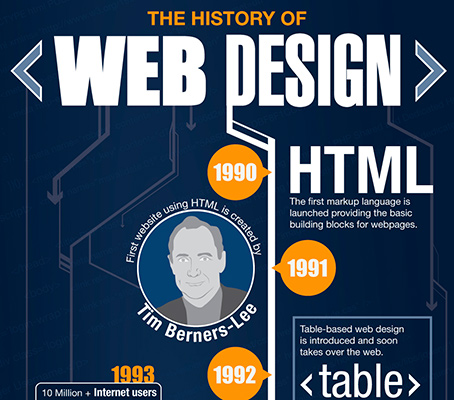Interested In Learning How Site Style Has Changed Throughout The Years? Explore The Progression From Standard, Straightforward Designs To User-Centered Methods That Prioritize The Needs And Preferences Of On-Line Visitors
Interested In Learning How Site Style Has Changed Throughout The Years? Explore The Progression From Standard, Straightforward Designs To User-Centered Methods That Prioritize The Needs And Preferences Of On-Line Visitors
Blog Article
Web Content By-Abel Singer
In the past, sites were straightforward and focused on details. Navigating was straight, and design was for desktop computers. Currently, customer experience is vital. Information overviews designs for easy navigation. Receptive layouts match various tools. Today, dark setting decreases pressure, and minimal food selections improve navigating. Interactive features engage individuals, and strong visuals stick out. AI assimilation increases interaction. See exactly how design has actually developed to boost your on the internet trip.
Very Early Days of Website Design
In the very early days of web design, simpleness preponderated. Sites were fundamental, with limited colors, font styles, and designs. The focus got on providing info as opposed to showy visuals. Users accessed the internet with slow-moving dial-up links, so speed and performance were crucial.
Navigation food selections were straightforward, normally located at the top or side of the page. Web sites were made for computer, as mobile browsing wasn't yet widespread. Content was king, and designers prioritized simple readability over intricate style components.
organic search engine optimization specialist was the key coding language utilized, and developers had to work within its constraints. https://www.retailtouchpoints.com/topics/digital-commerce/subscription-services-pro-tips-retail-cancellation-loyalty and interactive attributes were very little compared to today's requirements. Web sites were static, with little vibrant material or individualized customer experiences.
Surge of User-Focused Layout
With the development of website layout, a change towards user-focused style principles has become significantly famous. Today, developing internet sites that prioritize customer experience is essential for engaging visitors and achieving company goals. User-focused layout includes understanding the requirements, choices, and behaviors of your target market to customize the web site's layout, web content, and includes accordingly.
Designers now carry out detailed research study, such as user studies and use screening, to collect understandings and feedback straight from individuals. This data-driven method helps in producing instinctive navigation, clear calls-to-action, and visually enticing interfaces that resonate with site visitors. By putting the user at the center of the style procedure, web sites can provide a more customized and enjoyable experience.
Receptive layout has actually additionally emerged as a vital facet of user-focused layout, ensuring that sites are optimized for numerous tools and display dimensions. https://digitalmarketing10184062.liberty-blog.com/30013584/maximize-your-website-s-potential-with-on-page-search-engine-optimization-tricks-that-change-your-on-line-visibility-and-mesmerize-audiences ease of access and functionality, catering to the varied ways customers interact with websites today. Fundamentally, the increase of user-focused layout indicates a shift towards creating electronic experiences that focus on the requirements and expectations of the end customer.
Modern Trends in Website Design
Explore the most recent trends shaping web design today. One prominent fad is dark setting design, offering a streamlined and contemporary appearance while minimizing eye strain in low-light environments. One more crucial fad is minimal navigation, simplifying menus and enhancing individual experience by concentrating on essential elements. Integrating micro-interactions, such as computer animated switches or scrolling impacts, can develop an extra interesting and interactive web site. Receptive style remains essential, making sure seamless customer experiences throughout numerous gadgets. Furthermore, using strong typography and asymmetrical designs can include aesthetic passion and draw attention to particular content.
Incorporating AI innovation, like chatbots for consumer assistance or customized referrals, boosts customer interaction and simplifies procedures. Accessibility has additionally become a significant pattern, with developers prioritizing inclusive layout methods to deal with varied user needs. Embracing sustainability by maximizing internet site performance for speed and performance is another arising fad in web design. Collaborating with user comments and data analytics to repeat and enhance style constantly is essential for remaining pertinent in the ever-evolving electronic landscape. By embracing these modern-day fads, you can produce a visually appealing, easy to use web site that resonates with your target market.
Final thought
As you reflect on the advancement of website layout from the early days to currently, you can see how user-focused style has actually become the driving force behind modern-day trends.
Welcome the trip of change and adaptation in web design, constantly maintaining the customer experience at the forefront.
Stay present with the latest trends and technologies, and never stop developing your technique to create visually sensational and easy to use web sites.
Develop, adjust, and create - the future of web design is in your hands.
